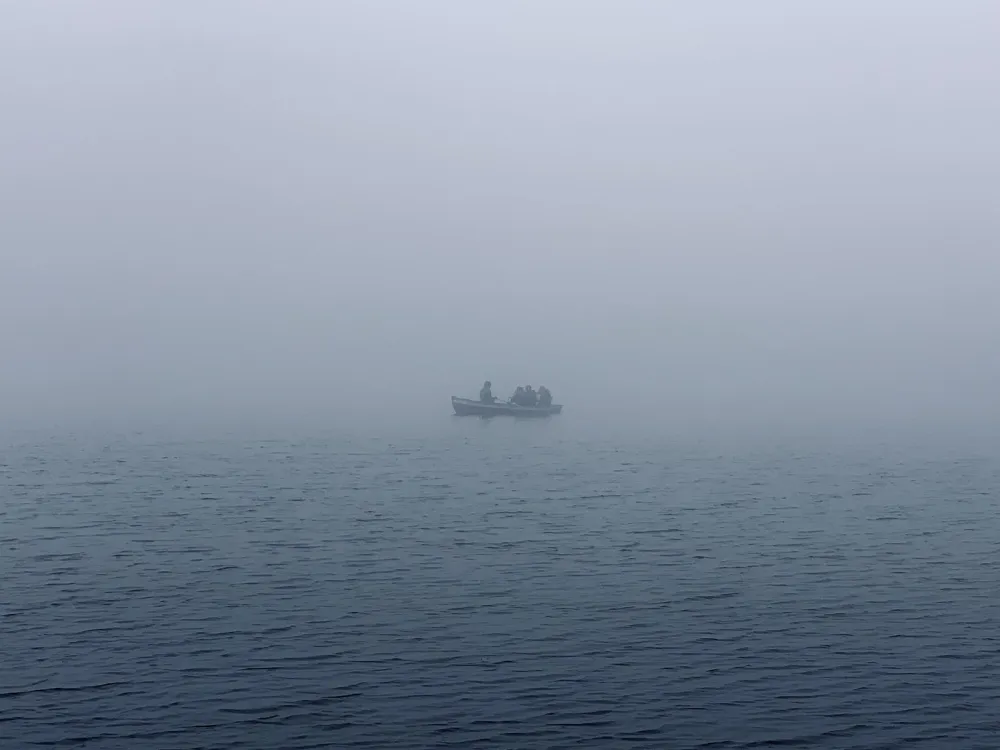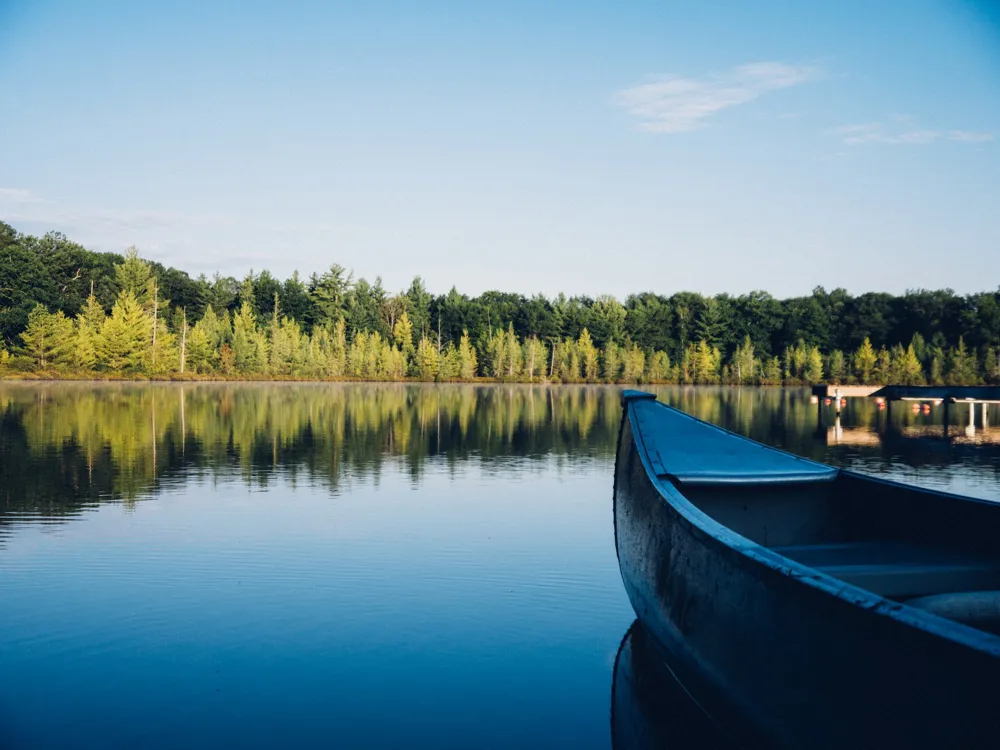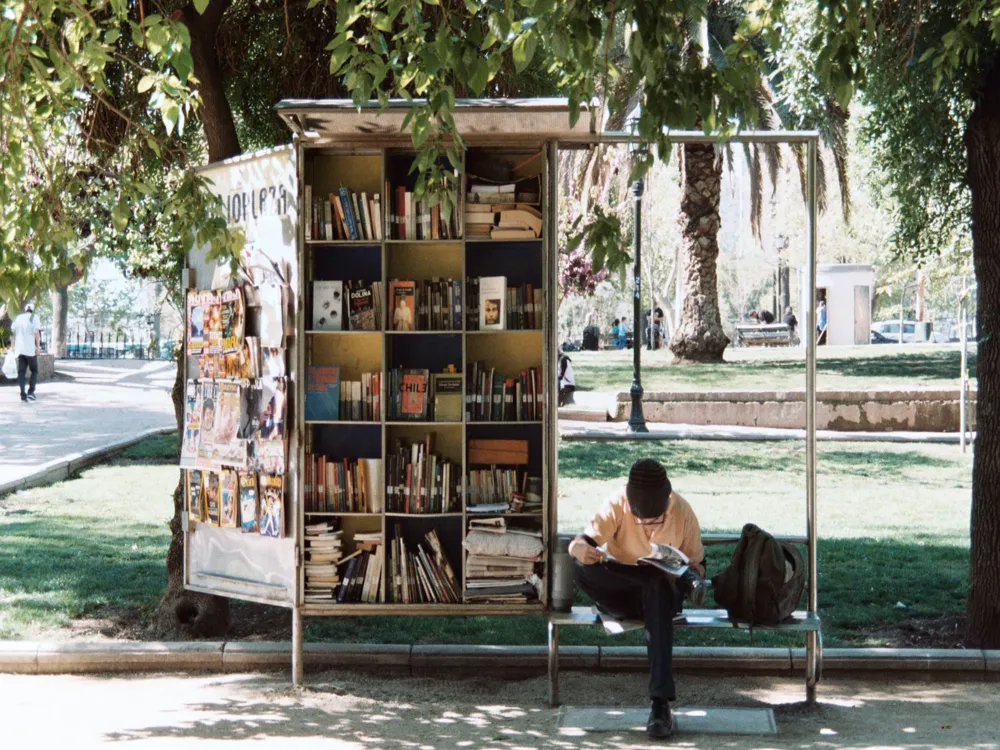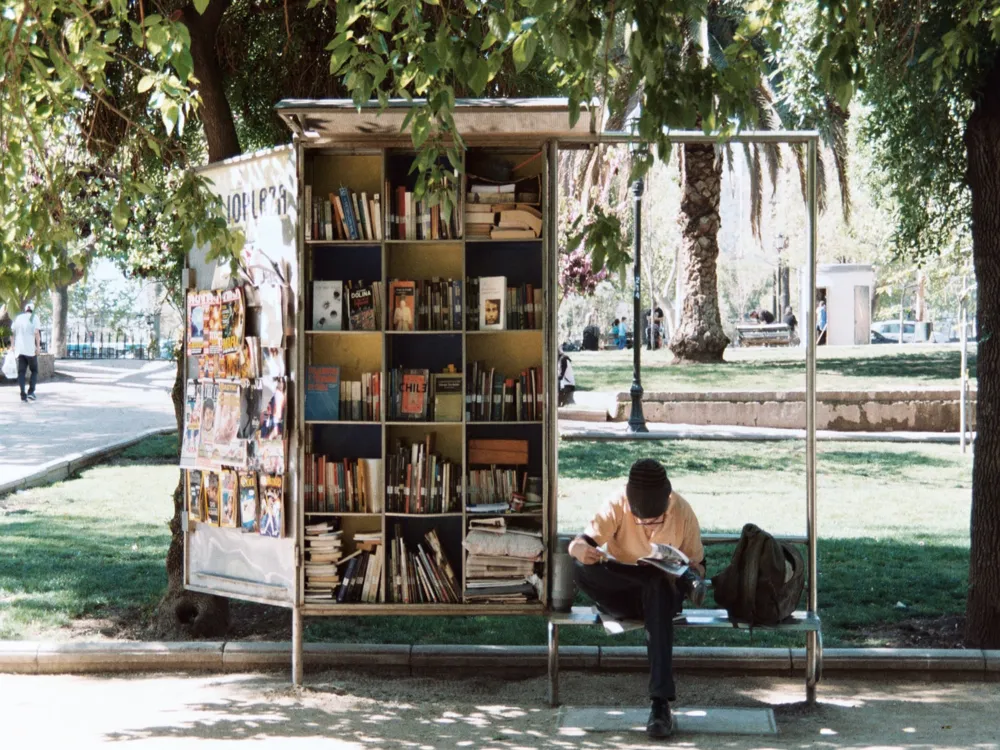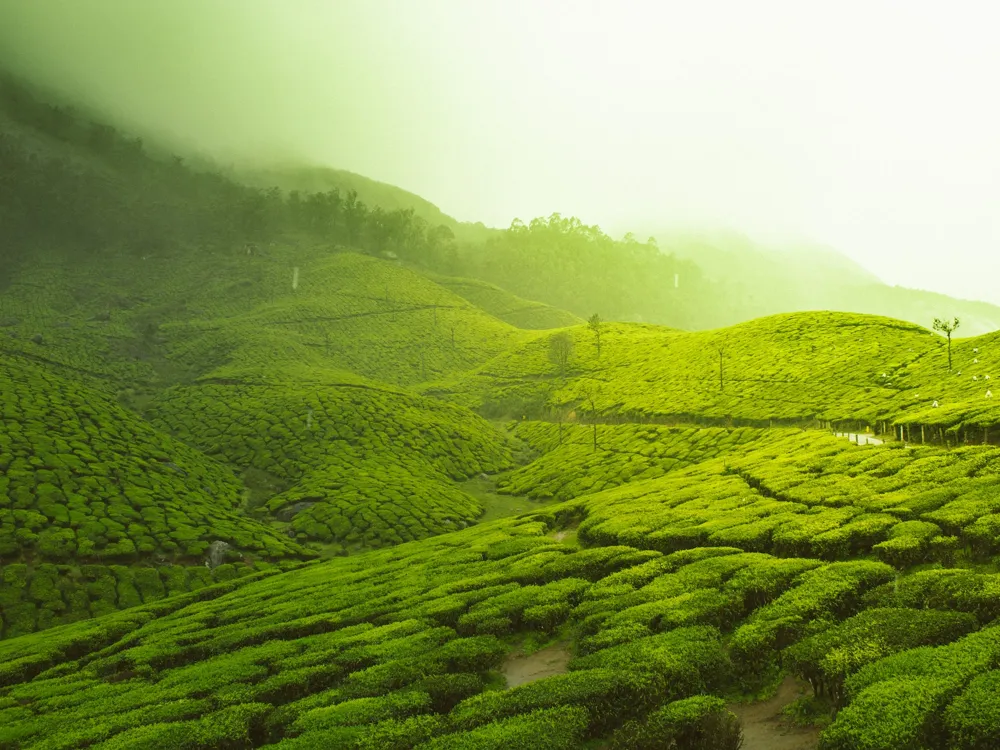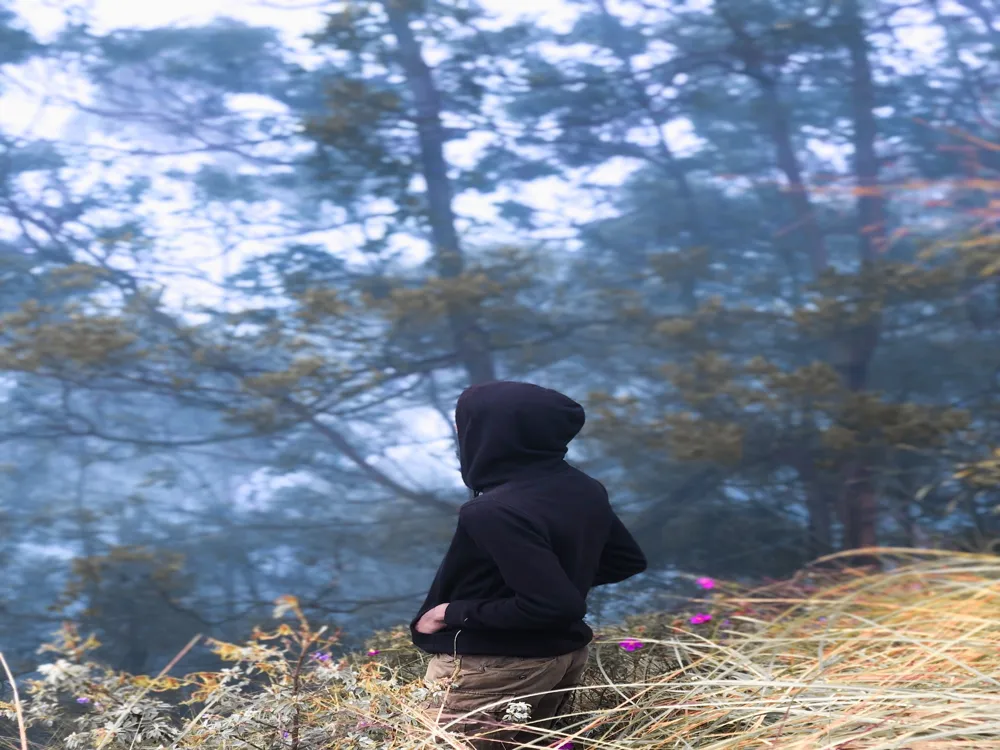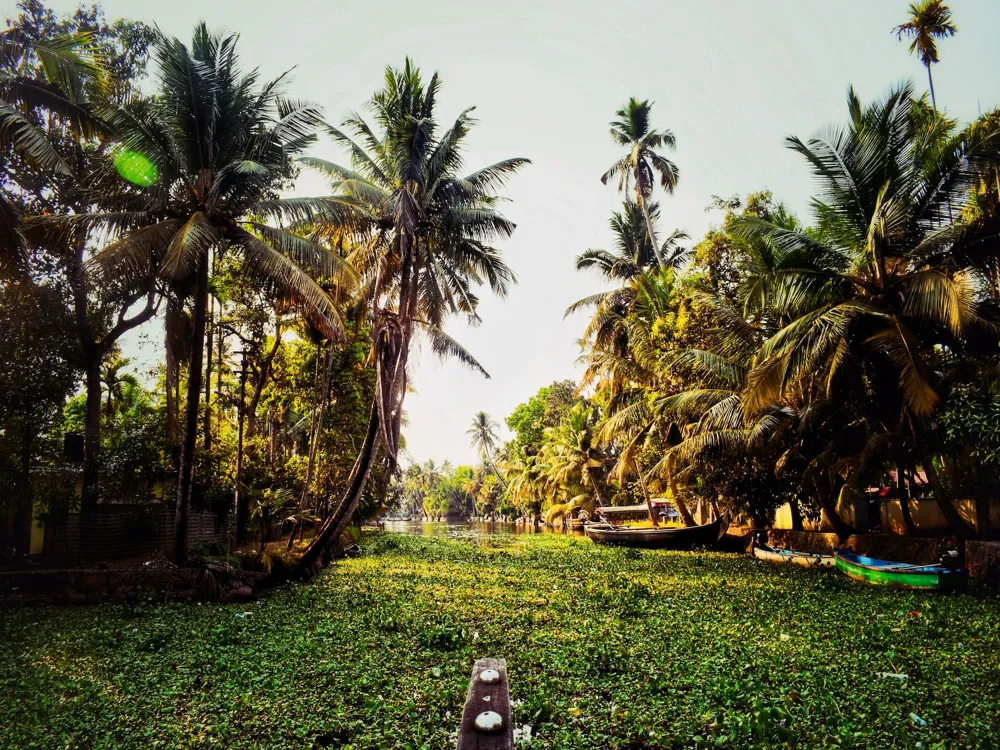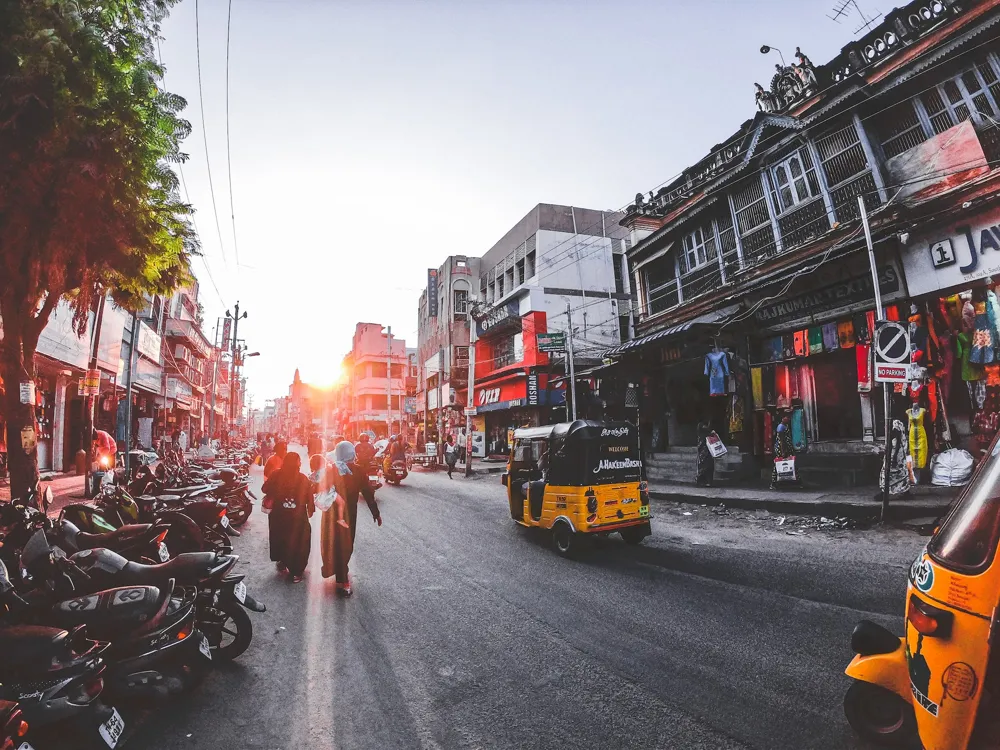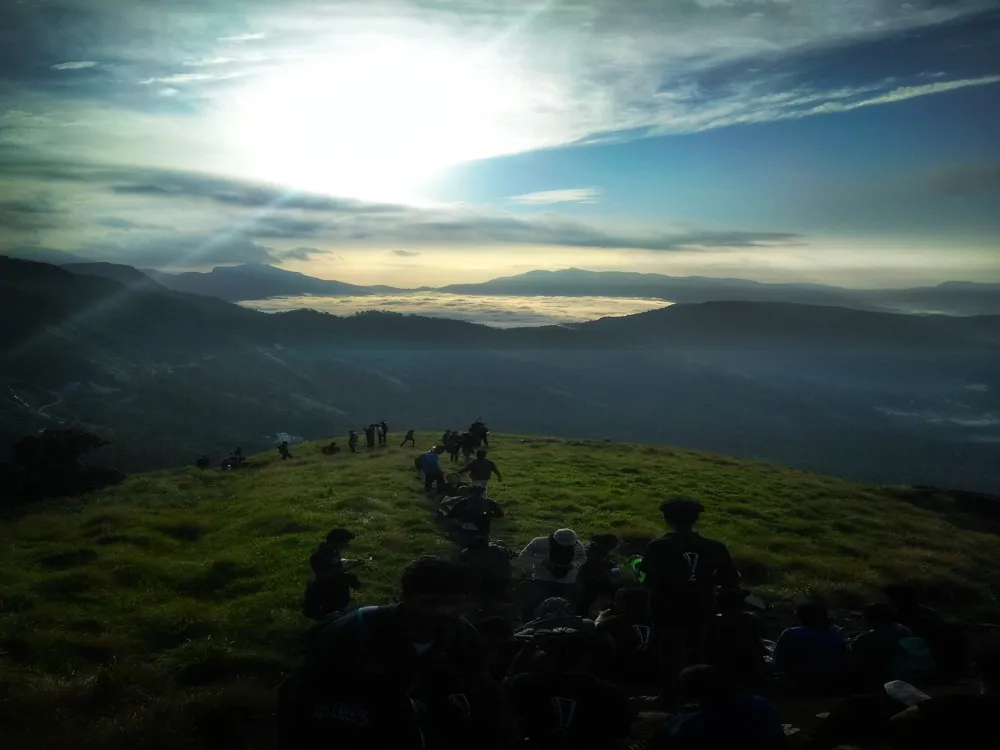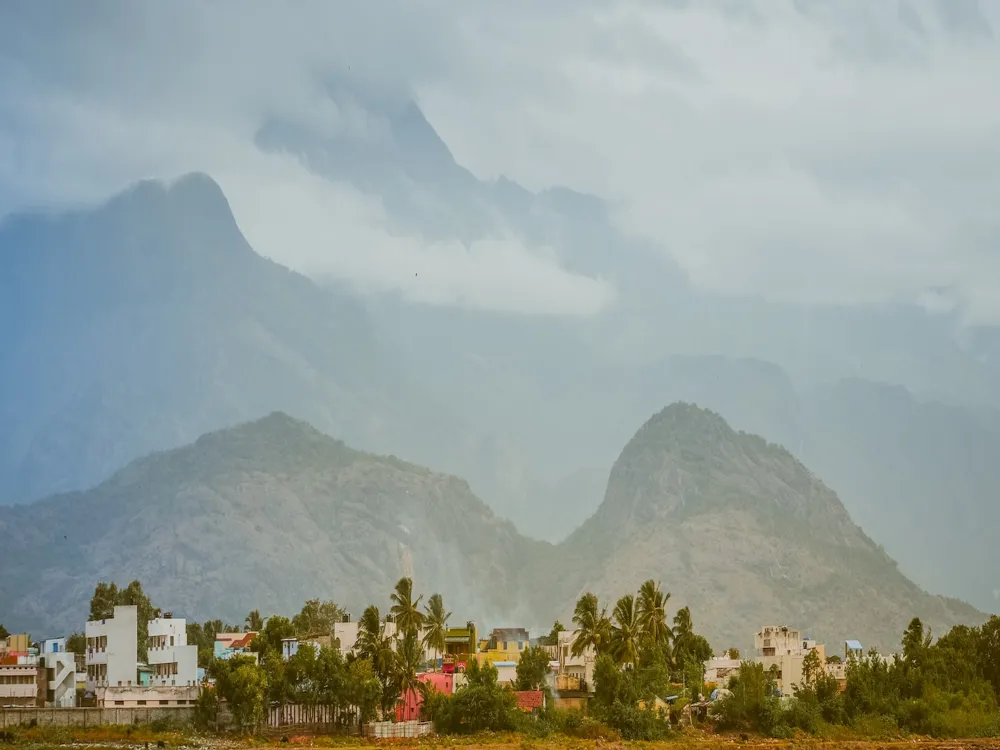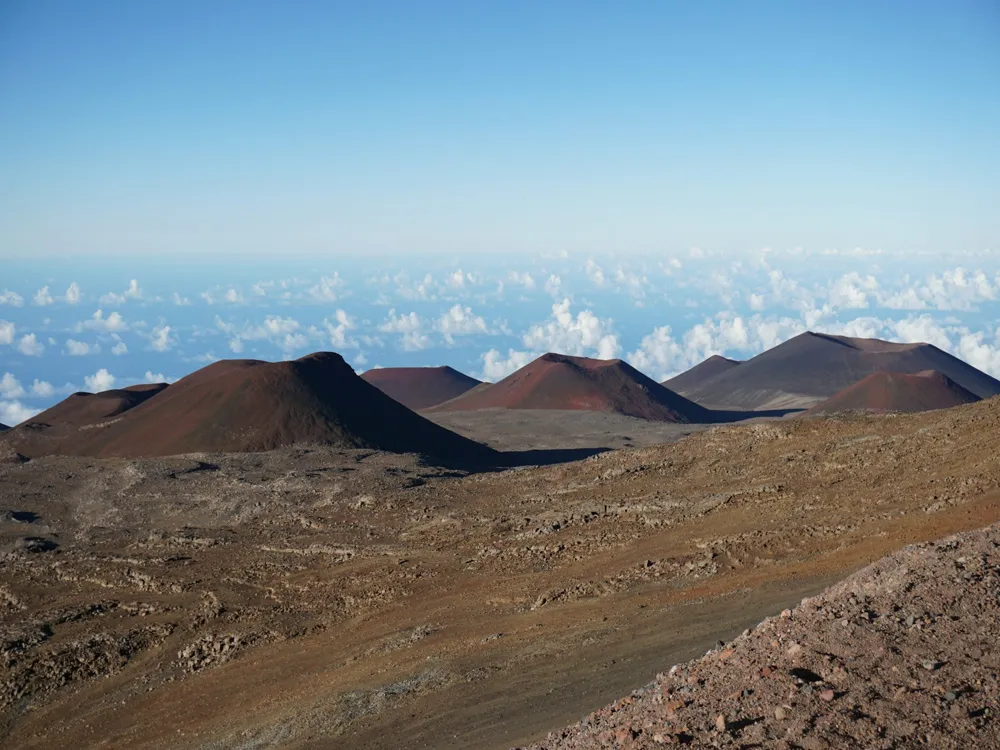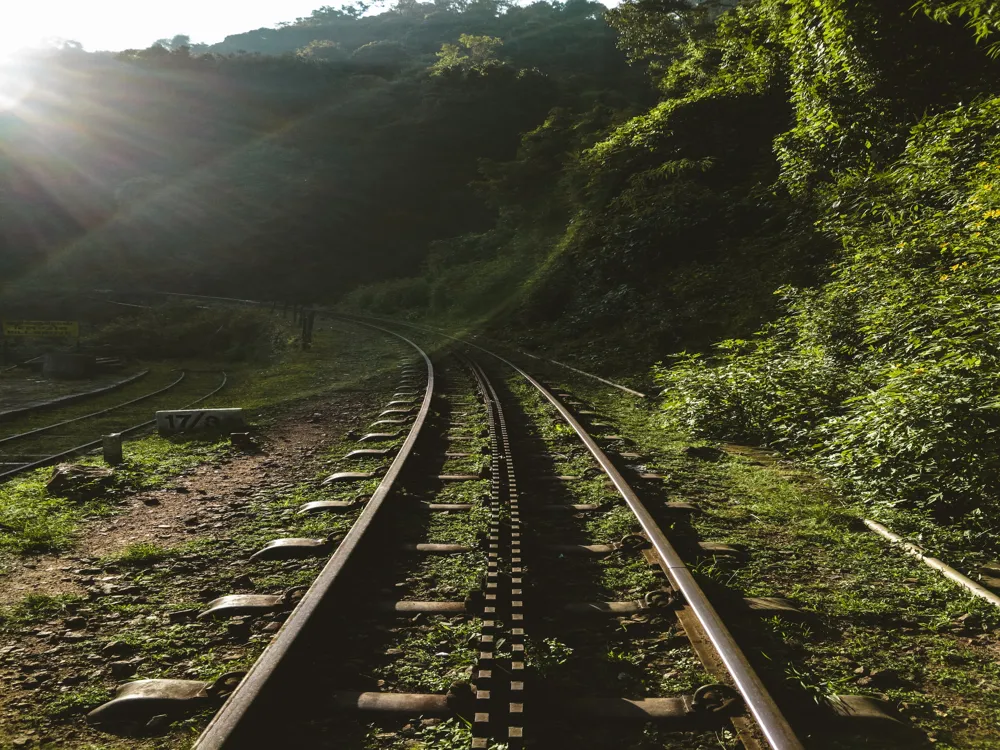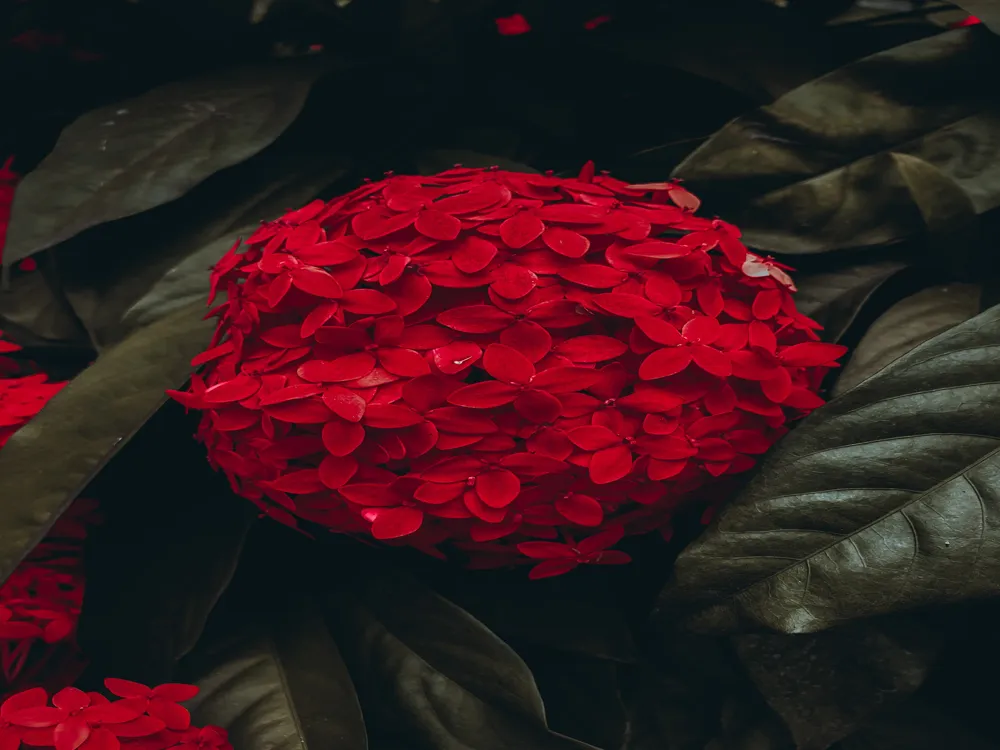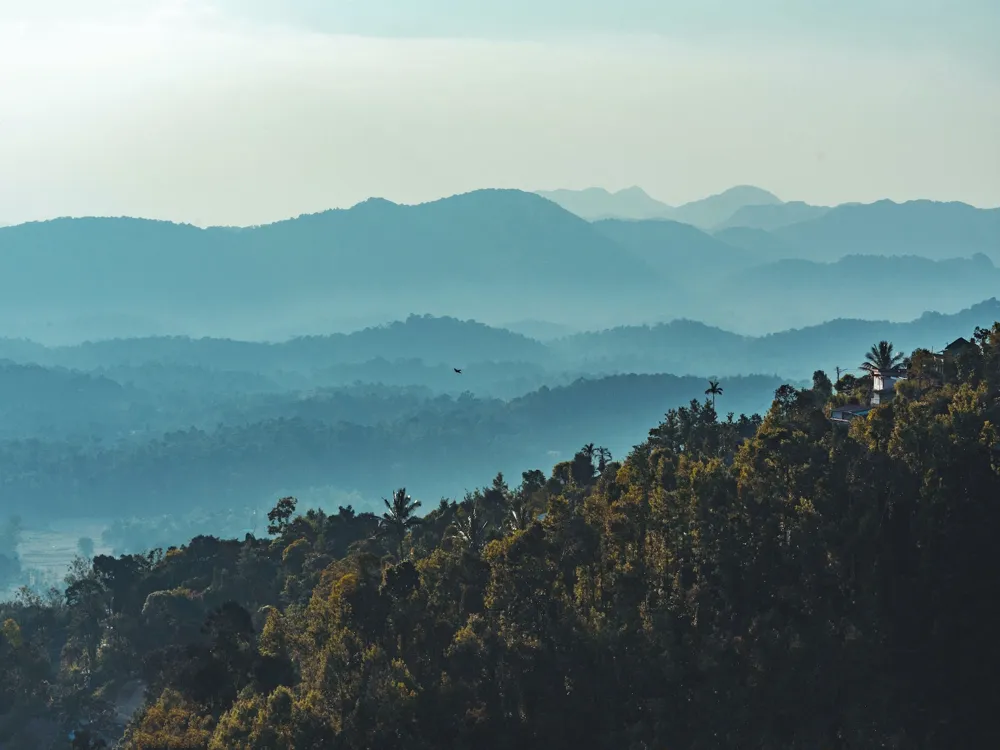Nestled in the serene hills of Kodaikanal, Tamil Nadu, Devil's Kitchen stands as a testament to nature's marvels. This intriguing geological formation, also locally known as the 'Guna Caves', captures the imagination of visitors with its mysterious and somewhat eerie ambiance. The name 'Devil's Kitchen' itself conjures images of myths and legends, adding to the allure of this destination. The caves, formed between three gigantic boulders, are part of a larger set of caverns and are believed to be formed due to the soil erosion and other natural forces over many centuries. The area surrounding Devil's Kitchen is blanketed with dense shola forests, adding a lush green backdrop to the rugged rock formations. This setting provides a habitat for various flora and fauna, enhancing the ecological significance of the region. As visitors trek towards the caves, they are often enveloped in mist, which adds to the mystical feel of the journey. The path itself is dotted with towering eucalyptus trees and offers breathtaking views of the valleys and hills that define Kodaikanal’s landscape. The folklore associated with Devil's Kitchen is as intriguing as the caves themselves. Local legends suggest that the caves served as a kitchen for the devil himself, hence the name. Others believe that these caves were once used by Pandavas, the heroes of the Indian epic Mahabharata, during their exile. These tales, whether myth or truth, add an element of mystique and have been a significant draw for tourists and explorers alike. The geological structure of Devil's Kitchen reveals a fascinating interplay of rocks and vegetation. The caves are primarily formed in granite, which is known for its durability and resistance to weathering. This has allowed the caves to withstand the test of time, preserving their unique structure. Inside, the caves are a labyrinth of narrow passages and deep chasms, some of which are still unexplored. The combination of darkness, silence, and the occasional drip of water creates an otherworldly experience for those who venture inside. Despite its allure, Devil's Kitchen is not just a place of beauty and mystery; it is also a region of ecological and geological importance. The caves and the surrounding area are home to several endemic species of plants and animals, some of which are rare or endangered. Conservation efforts have been underway to protect this unique ecosystem, making it a vital area for environmental studies and research. The architectural grandeur of Devil's Kitchen lies in its natural formation, which stands as an exemplary model of nature's craftsmanship. The caves are essentially a series of rock formations that have undergone significant geological changes over millions of years. The primary architectural element is the massive boulders that form the outer structure of the caves. These boulders, composed mainly of granite, are monumental in size and have withstood the forces of nature to retain their present form. The interior of Devil's Kitchen is a labyrinthine network of narrow passageways, crevices, and deep caverns. These internal structures provide a fascinating insight into the erosional processes that have shaped the caves. The narrow passageways are often just wide enough for a person to squeeze through, adding an element of adventure for explorers. The caverns, varying in depth and size, are a result of the gradual erosion of the rock by water over centuries. What sets Devil's Kitchen apart is the unique interplay between light and shadow within its confines. The natural skylights, formed by gaps in the boulders, allow sunlight to filter through at certain times of the day, creating an ethereal atmosphere inside the caves. This play of light, combined with the natural acoustics of the cave, creates a sensory experience that is both awe-inspiring and eerie. The caves also exhibit a variety of rock formations, including stalactites and stalagmites, though they are not as prominent as those found in typical limestone caves. These formations are a result of the mineral deposits left by the water seeping through the rocks. Over time, these deposits have created intricate patterns on the walls and ceilings of the caves, adding to their natural beauty. The architecture of Devil's Kitchen is not just about its physical structure; it's also about the environment it has created. The microclimate within the caves is markedly different from the outside. The temperature inside the caves tends to be cooler, and the humidity levels are higher, creating a unique ecosystem. This microclimate supports a variety of mosses, ferns, and other moisture-loving plants, some of which are unique to this region. The best time to visit Devil's Kitchen is between October and March when the weather is pleasant and conducive for exploration. It's advisable to start early in the morning to avoid the afternoon mist and to have ample time to explore. Given the rugged terrain and narrow passageways, it's essential to wear appropriate footwear and carry a flashlight. Visitors are advised to stay within marked trails as the caves can be treacherous and some areas are prone to landslides. Opting for a guided tour can enhance your experience. Local guides are knowledgeable about the caves' history, geology, and the folklore surrounding them. They can also navigate the complex paths safely. For photography enthusiasts, the caves offer a unique opportunity to capture the interplay of light and shadows. A good camera with low-light capabilities will be beneficial. Visitors are encouraged to maintain the sanctity of the site by avoiding littering and not disturbing the natural habitat. It's crucial to leave the caves as pristine as they were found. Devil's Kitchen in Kodaikanal is accessible by various modes of transportation. The nearest airport is Madurai Airport, located about 120 kilometers away. From there, visitors can hire taxis or take buses to Kodaikanal. Once in Kodaikanal, Devil's Kitchen is a short drive from the town center. It's also a popular trekking route for those who prefer to explore the scenic beauty of the hills on foot. Read More:Overview of Devil's Kitchen in Kodaikanal, Tamil Nadu
Architecture of Devil's Kitchen
Tips When Visiting Devil's Kitchen
Planning Your Visit
Safety Precautions
Guided Tours
Photography Tips
Environmental Responsibility
How To Reach Devil's Kitchen
Devil's Kitchen
Kodaikanal
Tamil Nadu
NaN onwards
View kodaikanal Packages
Weather :
Label : Must Visit
Tags : Cave
Timings : 9:00 AM - 5:30 PM
Time Required : 30 minutes
Entry Fee : Entry: INR 5,
Camera: INR 10
Planning a Trip? Ask Your Question
Also Refered As:
Guna Caves
Kodaikanal Travel Packages
View All Packages For Kodaikanal
Top Hotel Collections for Kodaikanal

Private Pool

Luxury Hotels

5-Star Hotels

Pet Friendly
Top Hotels Near Kodaikanal
Other Top Ranking Places In Kodaikanal
View All Places To Visit In kodaikanal
View kodaikanal Packages
Weather :
Label : Must Visit
Tags : Cave
Timings : 9:00 AM - 5:30 PM
Time Required : 30 minutes
Entry Fee : Entry: INR 5,
Camera: INR 10
Planning a Trip? Ask Your Question
Also Refered As:
Guna Caves
Kodaikanal Travel Packages
View All Packages For Kodaikanal
Top Hotel Collections for Kodaikanal

Private Pool

Luxury Hotels

5-Star Hotels

Pet Friendly







